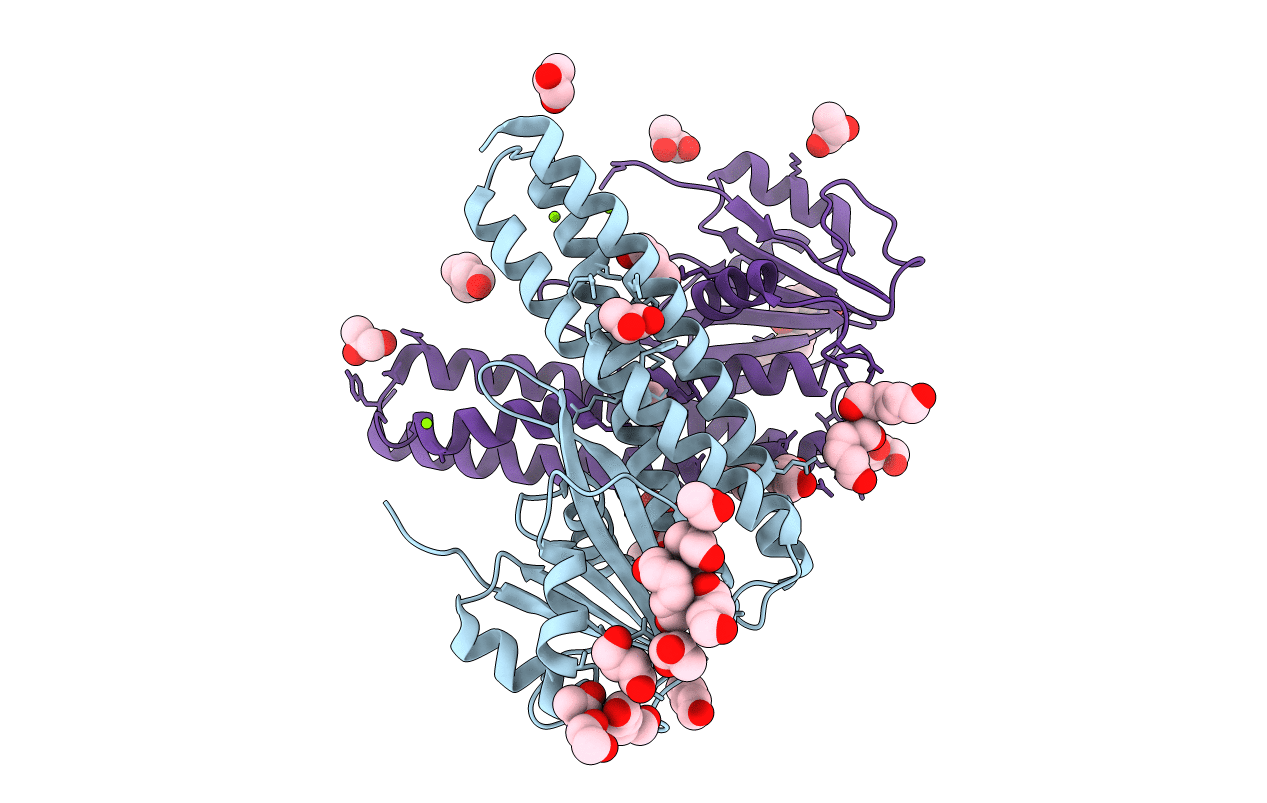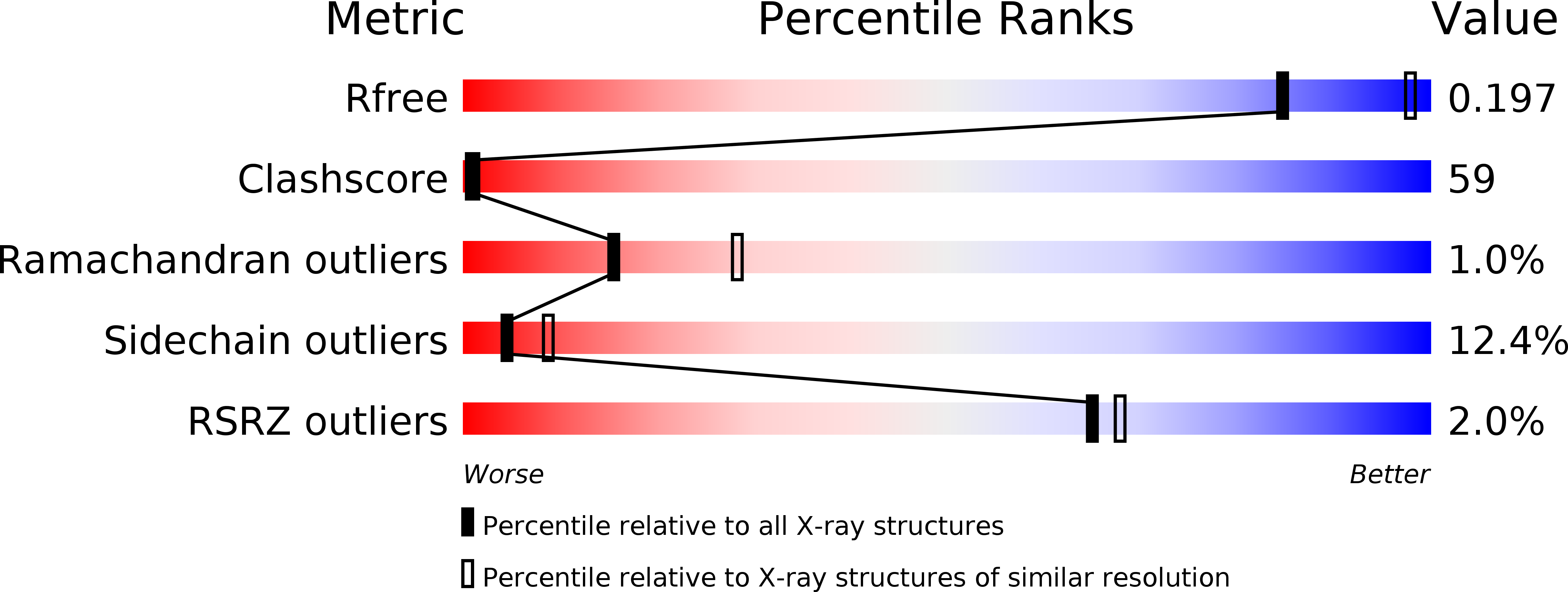
Deposition Date
2012-04-02
Release Date
2012-10-31
Last Version Date
2024-03-20
Entry Detail
PDB ID:
4EGW
Keywords:
Title:
The structure of the soluble domain of CorA from Methanocaldococcus jannaschii
Biological Source:
Source Organism:
Methanocaldococcus jannaschii (Taxon ID: 243232)
Host Organism:
Method Details:
Experimental Method:
Resolution:
2.50 Å
R-Value Free:
0.19
R-Value Work:
0.15
R-Value Observed:
0.15
Space Group:
P 61


